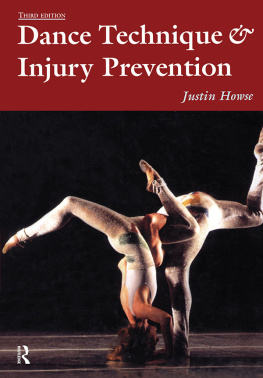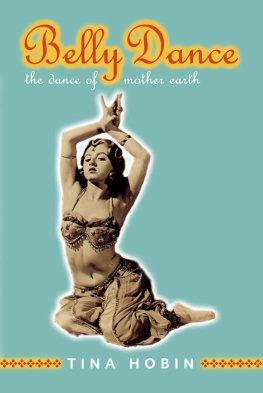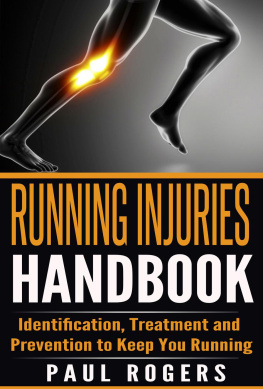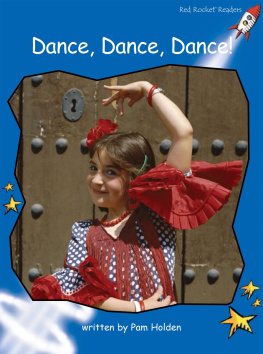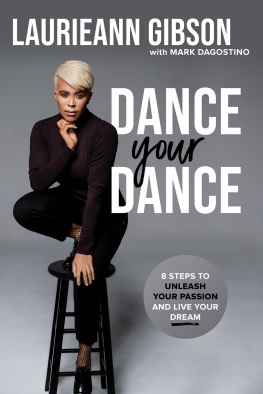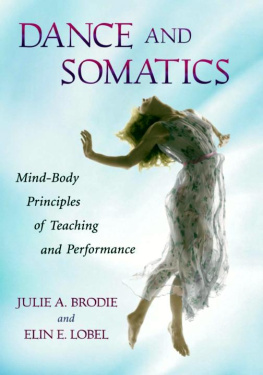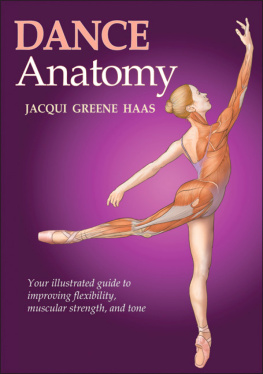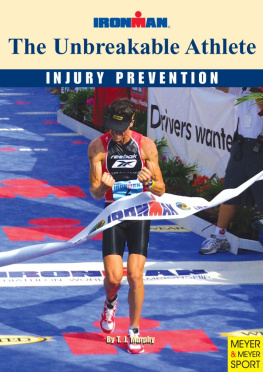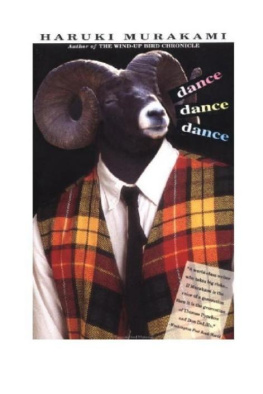Hancock Shirley - Dance Technique and Injury Prevention.
Here you can read online Hancock Shirley - Dance Technique and Injury Prevention. full text of the book (entire story) in english for free. Download pdf and epub, get meaning, cover and reviews about this ebook. City: Hoboken, year: 2014, publisher: Taylor and Francis, genre: Religion. Description of the work, (preface) as well as reviews are available. Best literature library LitArk.com created for fans of good reading and offers a wide selection of genres:
Romance novel
Science fiction
Adventure
Detective
Science
History
Home and family
Prose
Art
Politics
Computer
Non-fiction
Religion
Business
Children
Humor
Choose a favorite category and find really read worthwhile books. Enjoy immersion in the world of imagination, feel the emotions of the characters or learn something new for yourself, make an fascinating discovery.
- Book:Dance Technique and Injury Prevention.
- Author:
- Publisher:Taylor and Francis
- Genre:
- Year:2014
- City:Hoboken
- Rating:4 / 5
- Favourites:Add to favourites
- Your mark:
- 80
- 1
- 2
- 3
- 4
- 5
Dance Technique and Injury Prevention.: summary, description and annotation
We offer to read an annotation, description, summary or preface (depends on what the author of the book "Dance Technique and Injury Prevention." wrote himself). If you haven't found the necessary information about the book — write in the comments, we will try to find it.
Dance Technique and Injury Prevention. — read online for free the complete book (whole text) full work
Below is the text of the book, divided by pages. System saving the place of the last page read, allows you to conveniently read the book "Dance Technique and Injury Prevention." online for free, without having to search again every time where you left off. Put a bookmark, and you can go to the page where you finished reading at any time.
Font size:
Interval:
Bookmark:
T HIRD EDITION
Dance Technique & Injury Prevention
Justin Howse

First published in North America in 2000 by
Routledge
711 Third Avenue, New York, NY 10017
2 Park Square, Milton Park, Abingdon, Oxon OX14 4RN
www.routledge-ny.com
By arrangement with A&C Black
Routledge is an imprint of the Taylor & Francis Group, an informa business
Third edition originally published in 2000 by
A & C Black (Publishers) Limited
35 Bedford Row, London WC1R 4JH
Second edition 1992
First published 1988
ISBN 0-87830-104-6
Third edition 2000 Justin Howse and Moira McCormack
First and second editions 1992, 1988Justin Howse and Shirley Hancock
Cataloguing-in-Publication data is available from the Library of Congress.
All rights reserved. No part of this publication may be reproduced in any form or by any means graphic, electronic or mechanical, including photocopying, recording, taping or information storage and retrieval systems without the written permission of Routledge.
Cover photograph by Catherine Ashmore
Contents
Section Four contains a series of exercises, illustrated by 160 specially-modelled photographs.
Dame Ninette de Valois
This book gives us the opportunity to indulge in some serious reflection. It is full of highly technical observations on movement as related to the world of ballet and is accompanied by helpful illustrations. A great deal of it should be rewarding to students, dancers, teachers, repetiteurs and ballet staff in general. I dare to add that, in my opinion, it is also food for thought for choreographers. Today it is not customary for choreographers to give either scientific or practical thought to their choreographic demands. Let us recall that a composer has to remember to keep within the range of a singers voice. It therefore seems right for a choreographer to study more carefully not only the limitation of dancers limbs but also the limitation of their general stamina.
We have written this book in response to various requests from many different quarters. The content and layout of the book reflect the whole variety of interests and requirements of these different people. We have tried as much as possible to cover the various aspects of knowledge which have been requested. We realise, therefore, that one or more sections of the book may be of no interest at all to some readers but of the utmost importance to others. We originally considered publishing it in more than one volume but found the financial saving would have been negligible and indeed, if someone wished to purchase the entire work it would have been considerably more expensive. The reader must therefore pick and choose those sections which are of interest.
When deciding on the content of the book we found that there was nothing available on the market to fill the needs of dancers, teachers or those treating dancers injuries. Even in anatomy and physiology the available text books were either far too simple or too complicated. In particular there was nothing at all covering the consequences of technical faults in dance or the problems that can be associated with particular injuries in a dancer. Hence the final decision to try to incorporate all these various aspects of anatomy, technique and injury into one volume.
has a twofold aim. Primarily it is directed at student teachers who are required to learn anatomy and physiology and have to take an examination in the subject as part of their teaching diploma. This section should cover everything that they will be required to know. Its secondary purpose is to provide a reference section for those who wish to check up on anatomical names used in the later sections.
should be of some interest to the medical practitioner and physiotherapist but is particularly aimed at dancers and teachers in order to give them an insight into what actually happens as a result of an injury, the general cause of injuries and also some idea of the value or otherwise of the treatment which may be offered. There is such an abundance of advice available now for those who are suffering from any type of sports injury, which must include dance injuries, that it is difficult for the average person to evaluate the usefulness or otherwise of treatment that is proffered. Unfortunately, many aspects of treatment which are widely advertised and discussed are completely useless. We would particularly urge dancers to read and think carefully about the sub-section on nutrition and fluid intake.
is directed at the prevention of injury by discussing the important consequences of various technical faults in the hope that more effort and attention will be paid to the elimination of the faults once their consequences are understood.
is included to aid those who wish to devise their own muscle strengthening programme, although text and photographs can never be an adequate substitute for a visit to an exercises orientated physiotherapist or a good body control teacher.
The illustrations, whether diagrams or photographs, have been intentionally somewhat exaggerated where it is necessary to emphasise or clarify a point. Particularly when looking at a dancer for a technical fault or anatomical problem the variations from the normal may be very slight, so a good eye and a great deal of practice may be required to sort out the true cause of a dancers injury. So often the apparent reason for the injury is merely a culmination of far less obvious underlying causes which will each have to be dealt with or removed if recovery is going to be permanent.
In order to avoid the clumsiness of he/she we have referred throughout the text to he but the statements made usually refer to both sexes, apart from the few occasions when a remark very obviously refers to one or other sex alone. Most of the photographs are of male dancers because it is usually easier to see their muscle outlines.
The authors wish to acknowledge their very great debt to all the people who have given so much assistance in enabling them to produce this book. It is impossible to mention everybody but they would particularly like to thank the following: first and foremost all the dancers and dance teachers and professional students without whose willing assistance they would have been unable to work out the various causes of the different problems and devise the most effective forms of treatment. Frequently, the injured dancer has allowed some new form of treatment or different approach to be tried thus enabling us to expand our knowledge.
Our grateful thanks for the actual production of the book must go to Joy Ball and Maureen Spencer for all the typing, word processing and alterations; to Irene Prentice for most of the line drawings and for some additional drawings to Sarah Howse; to Mike Ethrington for his tremendous help and advice with the photographs; to Machael de Souter for acting as a model for all the photographs of the exercises in ; to Judith Roose for posing in the correct and incorrect postures; to Phil Harris for the proof reading, correction and help with the layout of the book; to Anne Watts of Messrs A. & C. Black for all her help, advice and particularly her patience; and, finally and most importantly, to Sherley, Tim and our children for all their forbearance and toleration when we were having to spend time on the book which should really have been spent with the family.
The skeleton forms the scaffold upon which the other tissues are built and it forms the basis of the shape of the human body. Many lower animals have no skeleton at all; good examples of these are the jellyfish and worms. Ascending the animal scale the skeleton can be in two forms there is the exo-skeleton or a skeleton that forms outside, as one sees in the lobster and other shellfish and insects where the hard covering of the body forms the scaffold and all the muscles and soft tissues are lying within this hollow scaffolding. Higher up the animal scale the endo-skeleton, or inside skeleton, has been developed and this is seen in fishes, birds and mammals. This endo-skeleton once again may be in two forms cartilaginous as in most fishes or bony as in birds and mammals.
Next pageFont size:
Interval:
Bookmark:
Similar books «Dance Technique and Injury Prevention.»
Look at similar books to Dance Technique and Injury Prevention.. We have selected literature similar in name and meaning in the hope of providing readers with more options to find new, interesting, not yet read works.
Discussion, reviews of the book Dance Technique and Injury Prevention. and just readers' own opinions. Leave your comments, write what you think about the work, its meaning or the main characters. Specify what exactly you liked and what you didn't like, and why you think so.

